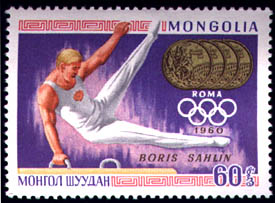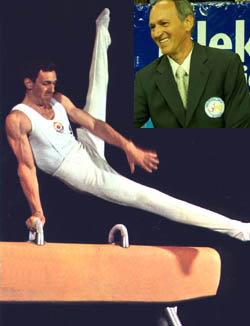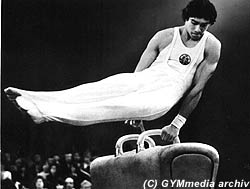
The oldest description of gymnastics on an artificial horse is over 600 years old. It was written by a Renatus Vegetius , who, in his four volume “Overview of the Roman Army”, describes soldiers using a wooden horse for practice. In the 17th century a drill- instructor developed the art of equestrian acrobatics from this description. In the early 19th century the wooden pommels were replaced by a biegel, and the wooden horse developed into a schwingel' covered in leather.
| Today's
fascinating and dynamic routines on a modern pommel horse are
hardly reminiscent of the early forms of movement on this apparatus.
The development was massively influenced by the flexible and innovative solutions offered by renowned apparatus manufacturers.... |
Trends
of Pommel Horse Routines of the Past Five Decades (I)
(by Heinz Neumann,
international judge for many years)



